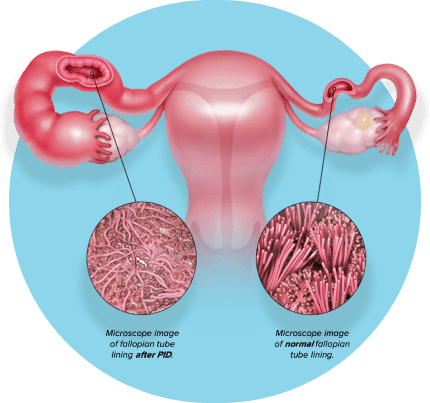Opt-Out Screening
with a Universal Approach
Choose Opt-out Screening with a Universal Approach to take awkward off the table. When using this preventative strategy with your adolescent and young adult females they will be notified that testing will be performed unless declined, regardless of reported sexual activity.
Many patients have concerns about confidentiality and may not admit to being sexually active. This means that many chlamydia and gonorrhea infections go undiagnosed and untreated.1
Hidden STIs
- ~1 in 2 new STIs were acquired by people aged 15-24 years old.2
- 5.6 million new chlamydia and gonorrhea cases are estimated every year in the U.S.3
- People ages 15-24 make up for 18.6% of the population, but account for 42% of gonorrhea cases and 62% of chlamydia cases.2
- Patients can go undiagnosed and untreated since more than 84% of chlamydia and gonorrhea infections are asymptomatic.4
Untreated Infections Can Lead to Long-Term Health Issues
30%
With patients having concerns about confidentiality and not admitting to being sexually active, this means many chlamydia and gonorrhea infections go undiagnosed and untreated.1

45%
A study estimated that 45% of tubal factor infertility cases were caused by chlamydia infections.6
PID can lead to long-term health issues such as infertility and ectopic pregnancy.7
24,000
Improving Patient Care Through Established Screening Guidelines
Major public health and medical societies are all aligned in their recommendations on screening for chlamydia and gonorrhea.9
CDCCenters for Disease Control and Prevention
All sexually active women younger than 25 years should be tested for chlamydia every year.
ACOGAmerican College of Obstetrics and Gynecology
Screen women 24 years and younger, and older women at increased risk.

AAPAmerican Academy of Pediatrics
Annual chlamydia screening of all sexually experienced females younger than 25 years.

USPSTFU.S. Preventive Services Task Force
AAFPAmerican Academy of Family Physicians
Screen women 24 years and younger, and older women at increased risk.
Take Awkward Off The Table
- All patients aged 15-24 years are eligible for testing unless their records are flagged at check-in as having had a negative test within the past 12 months, or they declined to be tested.11
- Healthcare providers advise patients, “We are going to test you today.”
Universal Screening: An effective strategy. An inclusive solution
This strategy targets all young women within the high-risk age group covered by USPSTF and CDC guidelines (15-24 years), without regard to their reported sexual activity.11 This approach provides comprehensive benefits to patients, physicians, and healthcare organizations, including:
- Detecting care opportunities that would otherwise be missed.
- Decreasing STI prevalence and infertility issues.
- Reducing total cost of healthcare.

Risk-based screening = missed opportunities
- ONLY 44-55% of sexually active women ages 16-24 are screened annually for chlamydia.12
- Risk-based screening assumes full patient disclosure about their sexual history.
- Cases of chlamydia and gonorrhea are often found even among those who report abstinence.11
- Patients refuse physician-offered screening, due to embarrassment or confidentiality concerns.
Primed to Protect Patients’ Reproductive Health
Introducing a universal screening protocol can help to:
Decrease STI
prevalence
Eliminate infertility due to undiagnosed infections
Reduce total
healthcare cost
For patients, this may mean:
No co-pay
No deductible
No out-of-pocket cost